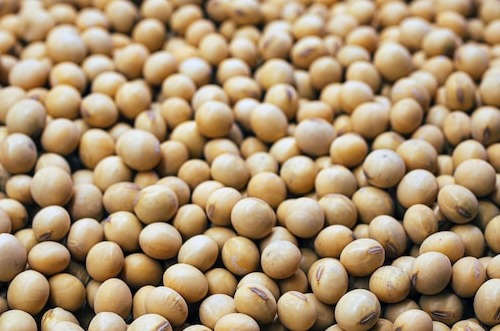W12 Soybean Update: Global Soybean Exports Surged in First Half of 2023/24 MY, Brazilian Harvest Progresses Amid Challenges

Global Soybean Exports Reach Record High in First Half of 2023/24 Season
During the first half of 2023/24, global soybean exports reached a record 78.7 million metric tons (mt), up 4.4 mmt from the same period in the 2022/23 season. Feb-24 alone saw exports of 13.7 mmt, a notable rise of 2 mmt from the previous year and consistent with averages in recent years. The surge was primarily driven by heightened shipments from Brazil and Paraguay, compensating for slower exports from the United States (US) and Argentina. Brazil's competitive export prices and active supply from farmers amid larger harvests contributed to this increase.
Brazilian Soybean Harvest Progressed 61.9% for the 2023/24 Season, Mato Grosso Leads
The Brazilian soybean harvest for the 2023/24 season reached 61.9% of the planted area as of March 17, according to the National Supply Company (Conab). This marks a slight delay of 0.6% year-on-year (YoY) but 6.1% week-on-week (WoW) increase. Mato Grosso leads in harvest progress, with 94.8% of the area harvested, followed by Mato Grosso do Sul at 85%. The Rio Grande do Sul has also commenced harvesting, with 1% of the area already harvested, indicating that all soybean-producing states are actively involved in the harvest for this season.
Paraná, Brazil, Completed 80% of the 2023/24 Soybean Harvest
In Paraná, Brazil, the 2023/24 soybean harvest has progressed to cover 80% of the planted area as of March 18, representing a 7% WoW increase. The Department of Rural Economy (Deral) reported that 74% of soybean crops are in good condition, with 24% in average condition and 2% in poor condition.
Brazil's 2023/24 Soybean Harvest Forecast Reduced 6% YoY
Brazil's soybean harvest for the 2023/24 season is forecasted to decrease 6% YoY, estimating a total production of 148.6 mmt, down from 157.83 mmt. This adjustment reflects reduced production potential in Paraná due to unfavorable weather conditions. Meanwhile, Conab also forecasts a lower soybean harvest of 146.86 mmt for the current season, attributing the decrease to a yield decline of over 7% despite a 2.5% increase in the planted area to 45.177 million hectares (ha).
US Soybean Processing Hits Record High in Feb-24
According to the National Oilseed Processors Association (NOPA), US soybean processing in Feb-24 hit a record high of 186.2 million bushels, surpassing Jan-24's 185.8 million bushels. The increase in processing volumes is due to the inauguration of new oil refineries in the US. Additionally, soybean oil stocks in the country rose to 1.69 mmt of pounds (lb) by the end of Feb-24, compared to Jan-24's 1.507 million lb.
USDA Forecasts Steady Soybean Imports from China Amid Decreasing Domestic Production
The United States Department of Agriculture (USDA) projects that soybean imports from China for 2024/25 will remain steady at 103 mmt, the same level as the previous season. Meanwhile, soybean production in China is forecasted to decrease slightly to 19.6 mmt for the 2024/25 period, down from 19.7 mmt in the previous season. From Jan-24 to Feb-24, China's soybean imports from Brazil saw a significant surge over the same period last year, reaching 6.96 mmt, a 211% Yoy increase from the 2.24 mmt imported during the corresponding period the previous year. This increase is due to Brazil's ample supply and competitive prices relative to the US.


